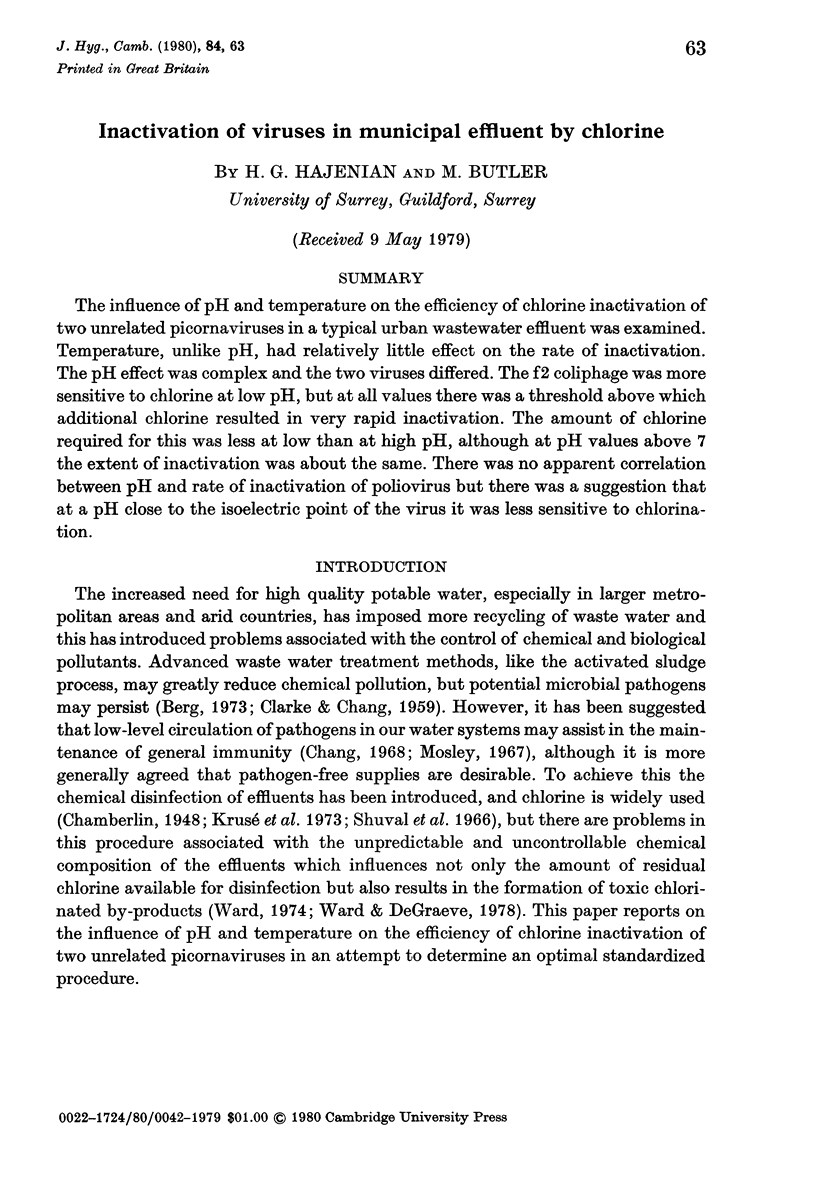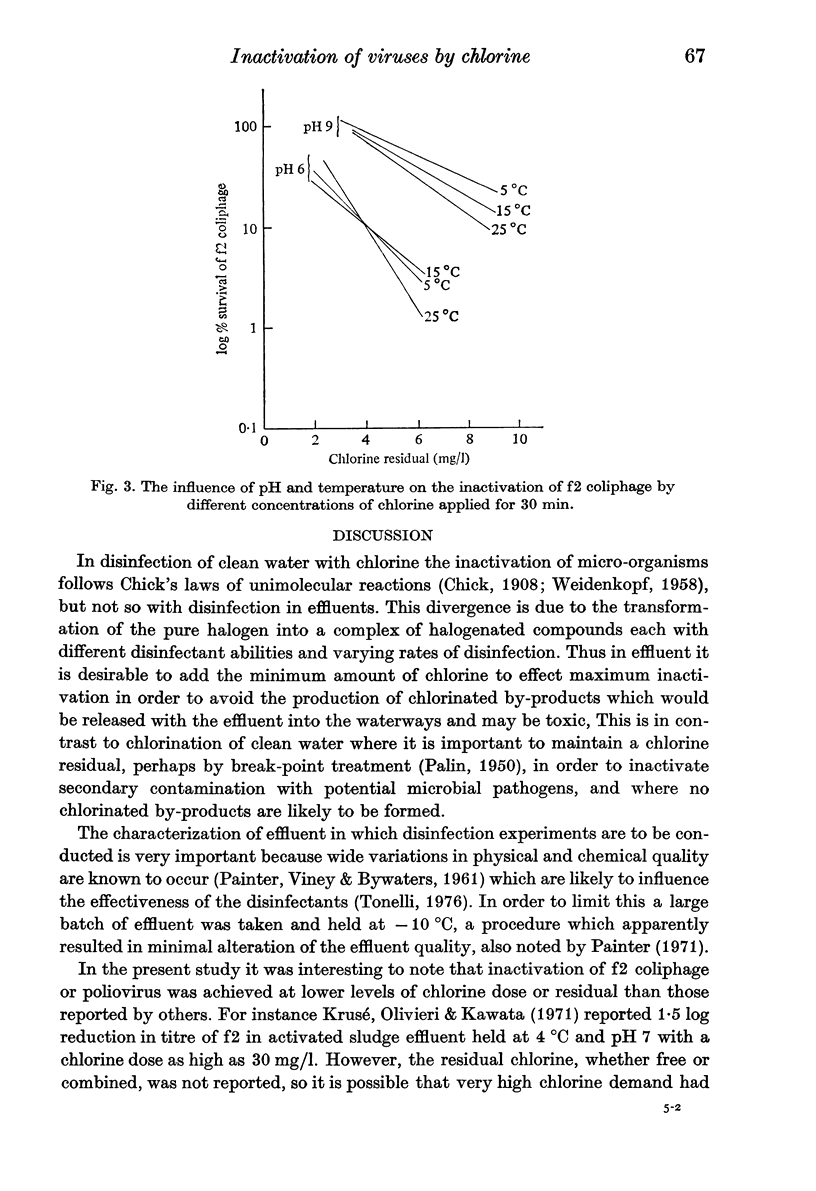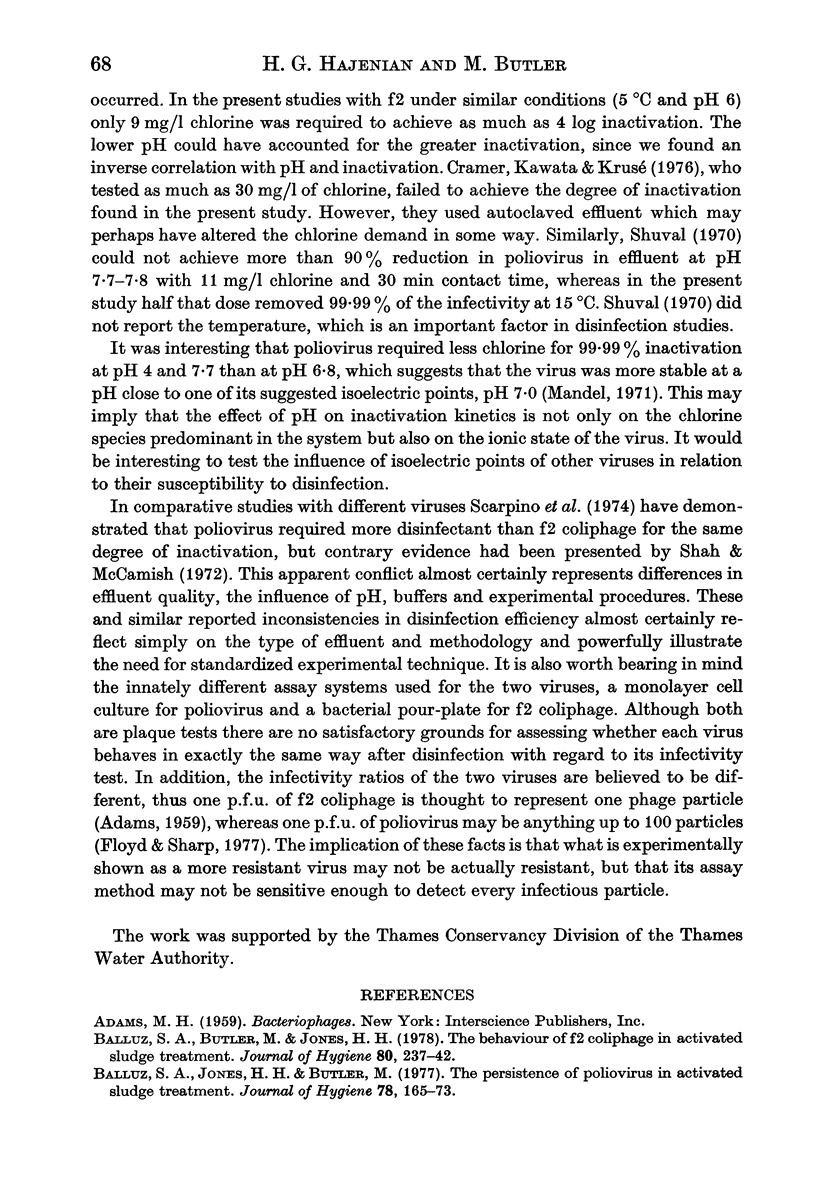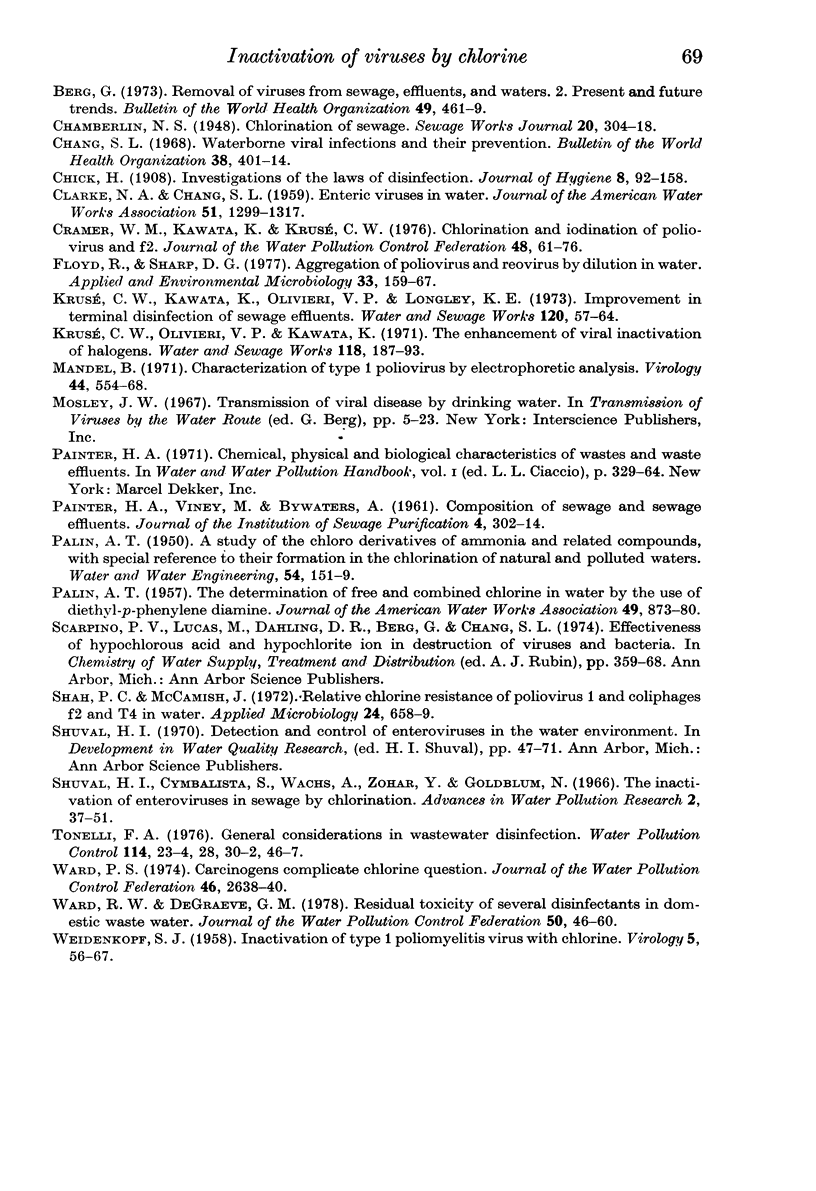Abstract
The influence of pH and temperature on the efficiency of chlorine inactivation of two unrelated picornaviruses in a typical urban wastewater effluent was examined. Temperature, unlike pH, had relatively little effect on the rate of inactivation. The pH effect was complex and the two viruses differed. The f2 coliphage was more sensitive to chlorine at low pH, but at all values there was a threshold above which additional chlorine resulted in very rapid inactivation. The amount of chlorine required for this was less at low than at high pH, although at pH values above 7 the extent of inactivation was about the same. There was no apparent correlation between pH and rate of inactivation of poliovirus but there was a suggestion that at a pH close to the isoelectric point of the virus it was less sensitive to chlorination.
Full text
PDF






Selected References
These references are in PubMed. This may not be the complete list of references from this article.
- Balluz S. A., Butler M., Jones H. H. The behaviour of f2 coliphage in activated sludge treatment. J Hyg (Lond) 1978 Apr;80(2):237–242. doi: 10.1017/s0022172400053584. [DOI] [PMC free article] [PubMed] [Google Scholar]
- Balluz S. A., Jones H. H., Bulter M. The persistence of poliovirus of poliovirus in activated sludge treatment. J Hyg (Lond) 1977 Apr;78(2):165–173. doi: 10.1017/s0022172400056060. [DOI] [PMC free article] [PubMed] [Google Scholar]
- Berg G. Removal of viruses from sewage, effluents and waters. 2. Present and future trends. Bull World Health Organ. 1973;49(5):461–469. [PMC free article] [PubMed] [Google Scholar]
- Chang S. L. Water borne viral infections and their prevention. Bull World Health Organ. 1968;38(3):401–414. [PMC free article] [PubMed] [Google Scholar]
- Cramer W. N., Kawata K., Krusé C. W. Chlorination and iodination of poliovirus and f2. J Water Pollut Control Fed. 1976 Jan;48(1):61–76. [PubMed] [Google Scholar]
- Floyd R., Sharp D. G. Aggregation of poliovirus and reovirus by dilution in water. Appl Environ Microbiol. 1977 Jan;33(1):159–167. doi: 10.1128/aem.33.1.159-167.1977. [DOI] [PMC free article] [PubMed] [Google Scholar]
- Mandel B. Characterization of type 1 poliovirus by electrophoretic analysis. Virology. 1971 Jun;44(3):554–568. doi: 10.1016/0042-6822(71)90369-2. [DOI] [PubMed] [Google Scholar]
- Shah P. C., McCamish J. Relative chlorine resistance of poliovirus I and coliphages f2 and T 2 in water. Appl Microbiol. 1972 Oct;24(4):658–659. doi: 10.1128/am.24.4.658-659.1972. [DOI] [PMC free article] [PubMed] [Google Scholar]
- WEIDENKOPF S. J. Inactivation of type 1, poliomyelitis virus with chlorine. Virology. 1958 Feb;5(1):56–67. doi: 10.1016/0042-6822(58)90005-9. [DOI] [PubMed] [Google Scholar]
- Ward P. S. Carcinogens complicate chlorine question. J Water Pollut Control Fed. 1974 Dec;46(12):2638–2640. [PubMed] [Google Scholar]
- Ward R. W., DeGraeve G. M. Residual toxicity of several disinfectants in domestic wastewater. J Water Pollut Control Fed. 1978 Jan;50(1):46–60. [PubMed] [Google Scholar]


